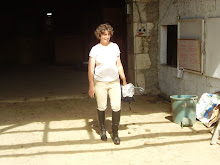Dear Bunny,
I would assume that you know what circling is, but just in case.... when you "ask" a story, you begin with a statement. There is a boy named Charlie who has a big black dog. Then you circle the statement by asking as many questions as possible. Is there a boy or is there a girl? Is his name Charlie or is his name Gottfried? Does he have a dog or a cat? Who has a dog? What does Charlie have? Is it a big dog or a small dog? What color is his dog? etc..
It might seem to you that asking questions about the same sentence over and over can only be boring. But what I experienced as a student in TPRS training sessions was that I was straining to understand each question and feeling encouraged when I realized that yes, I had understood the question correctly. And then the teacher would ask the same thing in a slightly different form, and it was a whole new ball game to me. The trick is to know your students' levels. If they are very weak, you might want to stick to yes/no, either/or questions. If they have a fairly good level, you can skip the yes/no and go straight into who,what, where, etc. The more advanced your class is, the less circling you do. but the new structures that you are introducing need to be thoroughly circled. I think it's Susie Gross who calls it "parking." Instead of going on with the narration of the story, you park on a structure and circle it until you see that the students have grasped it and are no longer clutching at straws, trying to guess what it might mean.
One mistake that I made when I first began circling was to ask for complete sentences from my students. Then it quickly got very boring, because every answer was the same sentence. They didn't have to understand what I was asking, all they had to do was repeat the original sentence, knowing the answer was in there somewhere. It's the incomplete, one word answers that show that your students have understood your question. and it's the effort they have to make to correctly understand your question and give the right answer that makes circling interesting. The teacher's job is to make it just challenging enough to keep it interesting.
